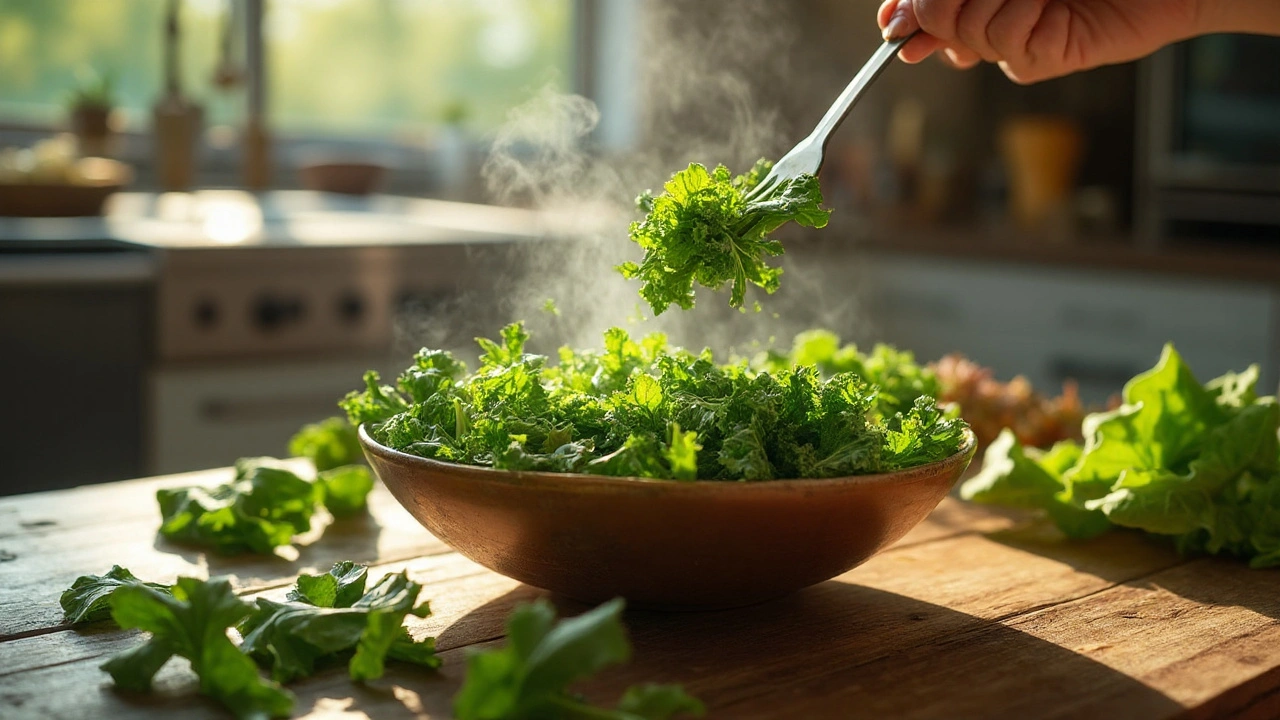Kale Weight Loss Guide: Benefits, Tips & Easy Recipes
If you’re looking for a cheap, nutrient‑packed food that can keep cravings at bay, kale is worth a closer look. It’s low in calories, high in fiber, and packed with vitamins that support a healthy metabolism. This combo means you can eat a generous portion without sliding over your calorie budget, while still feeling satisfied.
Why Kale Works for Weight Loss
Kale’s calorie count sits at about 30 kcal per cup of raw leaves, so you can load up on volume. The fiber in kale adds bulk to your meals, slowing digestion and keeping blood sugar steady. Stable blood sugar means fewer spikes in hunger and fewer impulse snacks.
Beyond fiber, kale supplies vitamin C, vitamin K, and antioxidants like quercetin. These nutrients help your body handle stress and inflammation, both of which can sabotage weight‑loss efforts. The high water content in kale also adds to its filling power without adding calories.
One more trick: the calcium in kale may aid fat breakdown. Studies show that calcium‑rich greens can modestly increase the amount of fat your body burns after a meal. While kale isn’t a magic pill, it fits nicely into a balanced plan that includes protein, healthy fats, and regular movement.
Practical Tips to Add Kale to Your Daily Meals
Start simple. Toss a handful of chopped raw kale into a morning smoothie with banana, berries, and a splash of almond milk. The fruit masks kale’s slight bitterness, and the fiber keeps you full until lunch.
If you prefer a crunchy side, make kale chips. Toss torn leaves with a teaspoon of olive oil, sprinkle sea salt, and bake at 350 °F for 10‑12 minutes. The result is a snack that satisfies the urge for chips while staying under 100 kcal per cup.
Sautéed kale is another winner. Heat a pan, add a dash of garlic and a splash of water, then cook until the leaves wilt. Finish with a squeeze of lemon for brightness. Pair this with a lean protein like grilled chicken or beans for a balanced dinner.
For soups, blend cooked kale into a vegetable purée. It thickens the broth, boosts nutrition, and makes the soup more filling. You can also replace part of the lettuce in a salad with kale, especially when you massage it with a bit of olive oil first—this softens the leaves and reduces the chewiness.
Portion control matters. Aim for 2‑3 cups of raw kale per day, which is roughly 60‑90 kcal. Combine it with protein (eggs, tofu, fish) and a small serving of healthy carbs (quinoa, sweet potato) to create a meal that supports steady energy and fat loss.
Watch out for thyroid concerns if you have an existing condition. Kale, like other cruciferous veggies, contains goitrogens that can interfere with iodine uptake when eaten in huge amounts. Cooking deactivates most of these compounds, so lightly steamed or sautéed kale is a safer everyday choice.
Here’s a quick recipe you can try tonight: Kale & Chickpea Stir‑Fry. Heat one tablespoon of olive oil, add minced garlic and a pinch of red pepper flakes, then stir in one can of drained chickpeas. Toss in 3 cups of chopped kale, season with salt, pepper, and a splash of soy sauce, and cook until the kale is wilted. Serve over brown rice for a filling, low‑calorie dinner.
Bottom line: kale is a versatile, low‑calorie food that can make you feel fuller, support metabolism, and add a nutritional punch to any diet. Use the tips above to weave more kale into your meals, and you’ll likely notice fewer cravings and steady progress toward your weight‑loss goals.
Kale for Weight Loss & Detox: Why It’s the Ultimate Supplement

Discover how kale works as a powerful dietary supplement for burning fat and detoxifying the body, with science‑backed nutrients, practical tips, and a handy comparison to other greens.